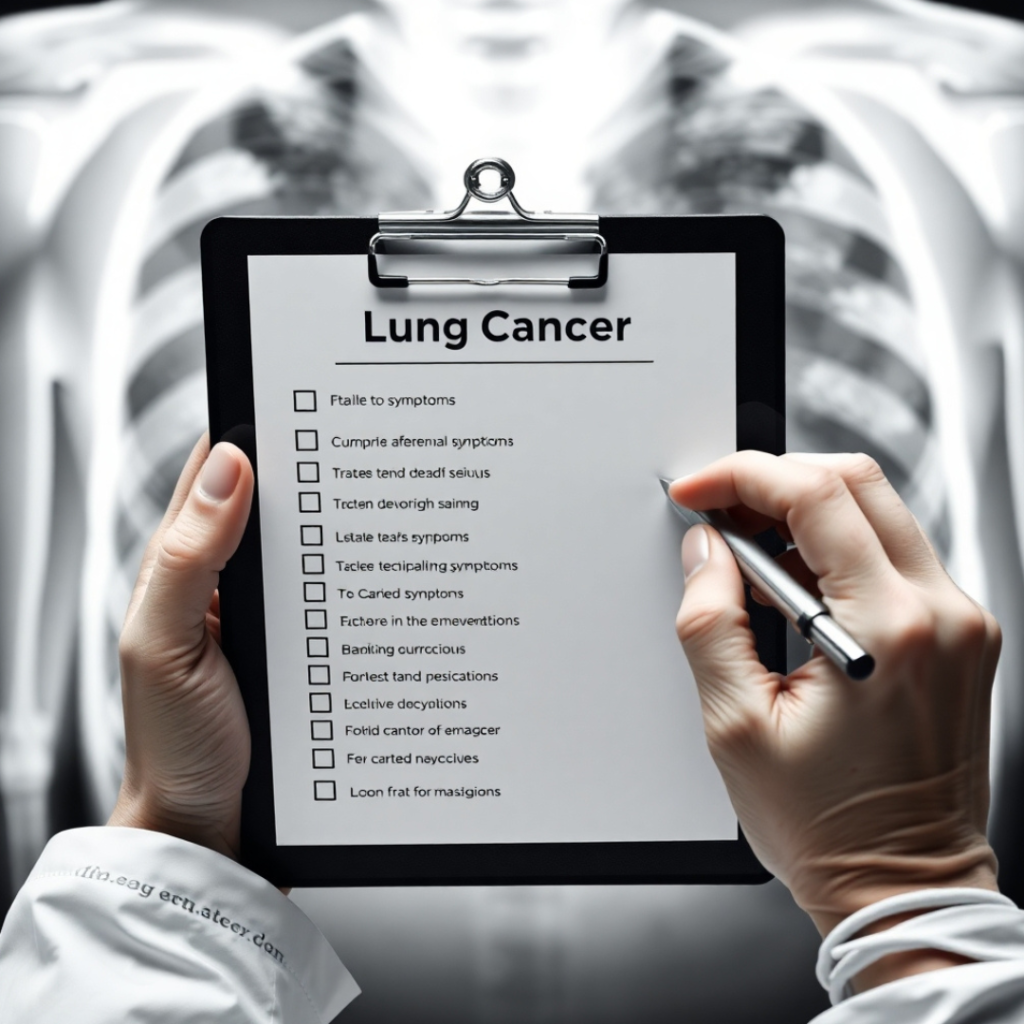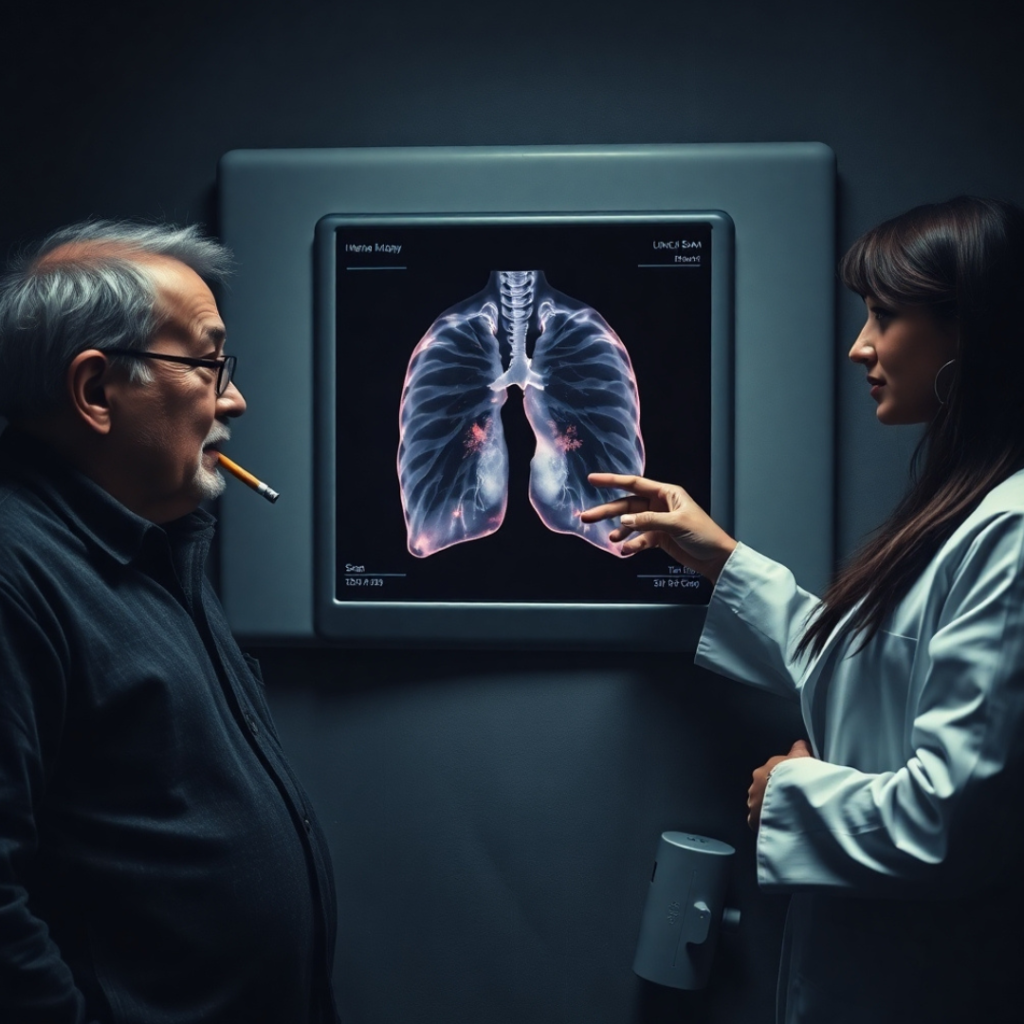
Lung Cancer Early Symptoms: How to Recognize the Warning Signs and Take Action
Lung cancer is often called the “silent disease” because its early symptoms can be easy to overlook. Many people don’t notice anything unusual until the cancer has advanced, making treatment more difficult. But catching lung cancer early can improve survival rates and expand treatment options. So, how do you recognize the signs? What should you do if something feels off? Let’s break it down in a way that makes sense—no fear, just facts.
Why Early Detection Matters
Think of lung cancer like a leak in your home’s plumbing. If you catch a small drip early, a simple fix can prevent major damage. But if the leak goes unnoticed, it spreads, weakens the foundation, and becomes harder to fix. Similarly, detecting lung cancer early means more treatment options and better outcomes. According to the American Cancer Society, when lung cancer is diagnosed in its earliest stage (localized), the five-year survival rate is about 60%-70%. But once it spreads, that number drops significantly. This is why recognizing lung cancer early symptoms is so important.
Common Early Symptoms of Lung Cancer
Lung cancer symptoms often mimic common illnesses like a cold or allergies, which is why many people ignore them. Here are the top warning signs to watch for:
1. A Persistent Cough That Won’t Go Away
We all get the occasional cough, but if yours lingers for more than eight weeks (or four if you don’t usually have a cough), it’s time to pay attention. This cough may:
- Start as a dry cough but later produce mucus
- Get worse over time instead of improving
- Bring up blood-tinged mucus (even small amounts)
2. Shortness of Breath (Even with Simple Activities)
If climbing the stairs or taking a brisk walk leaves you unusually breathless, it could be more than just being out of shape. Lung cancer can cause airway blockages or fluid buildup, making it harder for your lungs to expand fully.

3. Unexplained Weight Loss and Fatigue
Losing 10 pounds or more without trying isn’t normal. Cancer cells use up the body’s energy, leading to unexplained weight loss and persistent tiredness. If you find yourself constantly drained despite getting enough rest, don’t ignore it.
4. Chest Pain or Discomfort
Lung cancer can cause a dull ache or sharp pain in the chest, shoulders, or back. This pain may:
- Worsen with deep breaths, coughing, or laughing
- Feel like pressure or tightness in the chest
- Seem unrelated to movement or injury
5. Voice Changes (Hoarseness or Raspy Voice)
If your voice sounds hoarse or deeper for more than two weeks, lung cancer may be pressing on the nerves that control your vocal cords. It may feel like you’re losing your voice for no reason.
6. Frequent Lung Infections (Pneumonia or Bronchitis)
Are you catching respiratory infections over and over? Lung cancer can block airways, trapping bacteria and causing chronic infections that don’t fully go away.

Who’s at Risk? Understanding the Causes
Lung cancer doesn’t just happen to smokers. While smoking remains the #1 risk factor, non-smokers can also develop lung cancer due to:
✅ Exposure to radon gas – Found in homes, radon is the second-leading cause of lung cancer
✅ Secondhand smoke – Living with a smoker increases risk
✅ Air pollution & toxic chemicals – Long-term exposure to asbestos, diesel fumes, and industrial pollutants raises the risk
✅ Genetics – A family history of lung cancer increases susceptibility
Even if you don’t smoke, recognizing lung cancer early symptoms is still critical for early detection.
When to See a Doctor (And What Happens Next)
So, when should you stop brushing symptoms off as “just a cold” and see a doctor?
🚨 See a doctor if:
- Symptoms last more than two weeks and don’t improve
- You have risk factors (smoking history, toxin exposure, family history)
- You cough up any amount of blood
Your doctor may recommend a series of tests to determine the cause, including:
- Chest X-ray – The first step to spot abnormalities
- CT Scan – A more detailed lung scan to detect small tumors
- Sputum Cytology – Examines mucus for cancer cells
- Biopsy – Removes a small tissue sample for testing

What Happens If Lung Cancer Is Found? Treatment Options Explained
If lung cancer is caught early, there are several treatment paths, depending on the cancer stage and type.
1. Surgery (Best for Early-Stage Lung Cancer)
- Lobectomy – Removes part of the lung
- Pneumonectomy – Removes the entire lung in severe cases
2. Radiation Therapy
- Uses high-energy beams to kill cancer cells
- Often combined with surgery or chemotherapy
3. Chemotherapy
- Attacks fast-growing cancer cells
- Used alone or alongside other treatments
4. Lung Cancer Targeted Therapy
- Designed for specific cancer mutations like EGFR, ALK, or ROS1
- Fewer side effects than chemotherapy
5. Immunotherapy (Helping the Body Fight Back)
- Boosts the immune system to attack cancer
- Especially effective for advanced lung cancer cases

Can You Prevent Lung Cancer? Lifestyle Changes That Help
While there’s no guaranteed way to prevent lung cancer, you can take steps to lower your risk:
✅ Quit Smoking (Or Avoid Secondhand Smoke) – The biggest prevention step you can take
✅ Test for Radon – Home radon kits help detect this invisible gas
✅ Eat a Healthy Diet – Fruits, vegetables, and lean proteins can support lung health
✅ Exercise Regularly – Helps improve lung capacity and immune function
✅ Get Screened If You’re High Risk – Annual low-dose CT scans can catch lung cancer before symptoms appear
Frequently Asked Questions About Lung Cancer Early Symptoms
Q: Can lung cancer be detected early if I don’t have symptoms?
A: Yes! If you’re at high risk, a low-dose CT scan can catch lung cancer before symptoms develop.
Q: Do early lung cancer symptoms feel like a cold or flu?
A: Yes, which is why lung cancer often goes unnoticed. If symptoms don’t improve after 2-3 weeks, get checked.
Q: How is lung cancer different in smokers vs. non-smokers?
A: While smokers have a higher risk, non-smokers can still develop lung cancer from radon, pollution, or genetics.
Final Thoughts: Trust Yourself & Take Action
If something doesn’t feel right, listen to your body. Lung cancer early symptoms can be subtle, but recognizing them could save your life. If you have a persistent cough, shortness of breath, or unexplained fatigue, don’t ignore it—talk to a doctor, ask about screenings, and take control of your health. Want more updates on lung cancer prevention and treatment? Subscribe for the latest research and expert insights.
Sources:
- American Cancer Society: Signs & Symptoms of Lung Cancer
- National Cancer Institute: Early Detection & Screening for Lung Cancer
- Centers for Disease Control and Prevention (CDC): Lung Cancer Awareness
